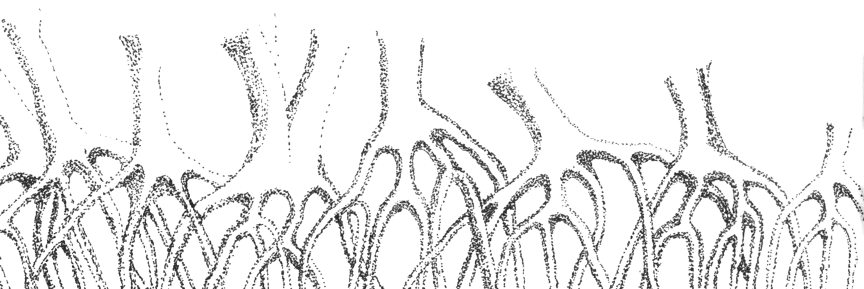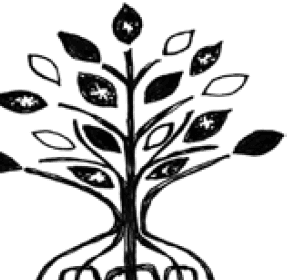Memoir
Maya Quirino
I had been her fan before I discovered, at a writers workshop, that I was related to Marjorie Evasco by blood. To a young aspiring poet, there was no way of taking the news of our kinship other than as a sign. Little wonder; to paraphrase Ligaya Mishan, teenagers fear one thing the most: being ordinary.
Having found ordinariness a good fit and poetry hard work, I have since desisted from becoming a poet, though not from writing poems occasionally, or what are the zero drafts of poems I am moved to write, for an audience of one. But for this Festschrift for Tita Marj, I have broken with tradition; to say thank you for the poetry books she’s given me, for the high teas and illuminating conversations, for the pearl-inlaid brass earrings from India whereby she conveyed that she had accepted my gender identity—the first relative to do so. Such love deserved an honest labor.
I have met up with Tita Marj only a few times, but each one was imbued with otherworldly benediction: a privileged encounter with a baylan whose knowledge and presence blessed as they shaped spirit and mind. Gilda Cordero-Fernando, and I only spent one day with her, had the same effect on me. Benilda Santos, another. Priestesses all, transported from pre-colonial Daguma mountain range or Panay Island to treat spiritual afflictions built into the DNA of the modern city, that creature emblematic if facilitative of overdevelopment.
The deadliest blow of technological modernity to humankind is our loss of astonishment; in the Anthropocene–Capitalocene, we mistake our ability to build materials from nature our supremacy, thus charting our existential odyssey by the stars of productivism and scientism. We only succeed in atomizing ourselves, and in rousing an aspect of nature that, to restore balance, must obliterate.
Maria Mies traces the roots of this arrogance: “The rise of modern science, a mechanistic and physical world-view, was based on the killing of nature as a living organism and its transformation into a huge reservoir of ‘natural resources’ or ‘matter’, which could be analysed and synthesized by Man into his new machines by which he could make himself independent of Mother Nature.” For Susan Griffin, the domination of nature—and women—is the result of a male conspiracy.
Marjorie Evasco’s ecopoetry shows us up as a species which has lost its bearings. For the Teduray and Lambangian Indigenous people, an epidemic (dulet) is symptomatic of buneg, a fracture in our relationship with nature. (The COVID-19 pandemic is the most dramatic illustration of this rupture which results chiefly from human encroachment on wild refugia.) She writes of buneg in its many guises and incarnations, the luminosity of her craft used to lay bare environmental catastrophe and the role of Homo sapiens in unleashing it.
In her poem, “Krutsay,” which is a part of Agam, a literary anthology on climate change, Marjorie Evasco introduces us to a fisherman who prides himself on his knowledge of the sea: “My father taught me skills of how to read lines of the sea / and the signs hidden in the clouds or the winds…” But the climate crisis “…caused by the foul smoke from // the white behinds of the big and rich nations of the world” threatens his knowledge—and his livelihood: “‘All of us already know that the northeast wind towards the end of year / blows gentler than the southwest wind.’/ As our old song goes: It is getting gloomier and gloomier in the southwest. Be on guard, companions, / the balancing spar should not be abandoned…”
The signature Evasco poem, because of its exceptional crafting, has the hypnotic pull of a brook, and the potency of prayer, or a spell. (“In Boholano culture, the babaylan [shamanic healer] would cast spells or charms for a specific purpose with words of power, and the sound of the words as well as the tonal intent of the voice configure seamlessly in the spell's incantatory form. For me, every poem is such an incantation that is charged as a talisman, to give the one who knows how to use its power the gift of protection from what is untrue, ugly and harmful to the human spirit,” Tita Marj said in an interview.)
Poetry, even the very best, does not have the physical benefit of a rain gauge on a coastal town lying in the path of typhoons, or of a small water impounding system on a farming community taken hostage by drought. But, think of hudhud, chanted by the Ifugao to pay homage to and reinforce their traditional practices or customary law as they sow or harvest rice; a marriage of song and subsistence that for industrial agriculture is an inefficient use of time. (Incidentally, it is a woman who leads the chants, which last for several days.)
Poetry, like religion, operates in the realm of mythos, which is about “discourse, stories about the more difficult aspects of our humanity,” as opposed to logos, which is science or reason that allows us to function in the everyday, as Karen Armstrong explains. Forged in leisure, which is the basis of culture, according to Josef Pieper, poetry (and the arts) is a repudiation of the commodification of time and of the logic of capitalist production. Leisure is an invitation to contemplate the world, or the “totality of things.”
“When ‘being proletarian’ means nothing other than being bound to the work-process, the real key to overcoming the condition—that is to say, a true de-proletariatization— would consist in making available to a working person a meaningful kind of activity that is not work—in other words, by opening up an area of true leisure,” Pieper says. Leisure is emancipatory: “To be taken from the toil of the work-day, to an endless day of celebration; to be rapt from the confines of the working environment into the very center of the world.”
Poetry can thus simultaneously be an embodiment of and a handmaiden to transformation. As the fisherman asks at the end of Krutsay: “Would a simple fisherman’s song suffice? / If not, how else would we live?” If predatory capitalism ensnares and imprisons through a politics of resignation, poetry instigates and liberates through the harmonious union of image and line, meaning and music. “Life is always good; it is with the world that I have a quarrel,” Tita Marj once told me. This nuance was godsend for a then newbie non-profit worker upset, but also overwhelmed, by injustice. Poetry is on the side of life.
I am not at all qualified to make an accounting of Marjorie Evasco’s contributions to Philippine letters. Mercifully, others in this book have that expertise. But for the general reader such as myself, her poetry functions as, in the words of Mary Oliver, a “life-cherishing force.”
Marjorie Evasco’s ecopoetry forms part of a growing body of the arts of living, where environmental conservation and the humanities meet, in and for a world fraught with climate uncertainty. The songs of fishermen, which “are also guides on how to live well in this world,” she writes about in Krutsay are true of her poems.
In her poem, “Farol de Combate,” published in Harvest Moon: Poems and Stories from the Edge of the Climate Crisis, she prescribes a particular guiding principle for navigating upheaval:
I trust that beside the well which had been dug
By my elders, a storm lamp had been placed,
Lighting up the path toward home, the lamp-
Lighter minding the first law of neighborliness:
To help one another as best as one can in daily
acts of living, for if the lamp were put out, unlit,
Someone passing by might stumble or slide,
Fall into the neighborhood well and die.
Wendell Berry characterizes neighborliness as “preemptive sympathy,” and it is, as Evasco shows in her poem, a simple yet radical idea with which we can begin to reimagine and reconstruct social, economic, and political relationships and frameworks. In rural hometowns, such as Evasco’s Bohol, and wild places where people still depend on nature and others for survival and sustenance, can the buds and seeds for an ecological and neighborly art of living toward structural change be found.
In and through her poetry, we are led into the domain of the sacred and invited to tap into a kindness within and without, in ourselves as in other people and nature, the very source of life and an intimation of the divine. Those who accept her invitation will have found themselves renewed and transformed by her transcendent art and by all that is good, as in the persona in Farol de Combate:
When I pass by the well I will draw water and drink,
Give thanks to my unseen neighbor for the light.








